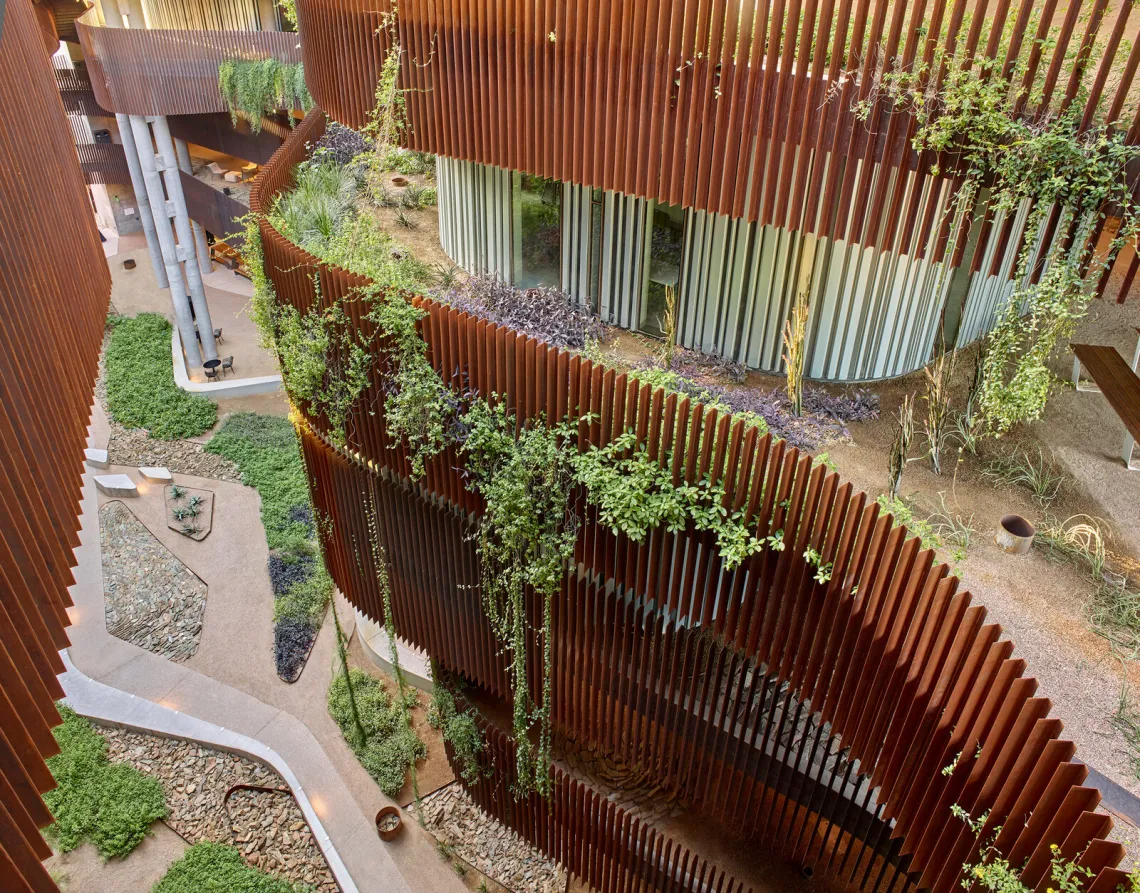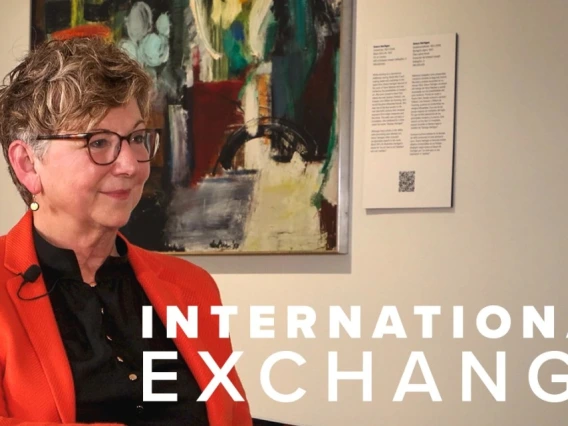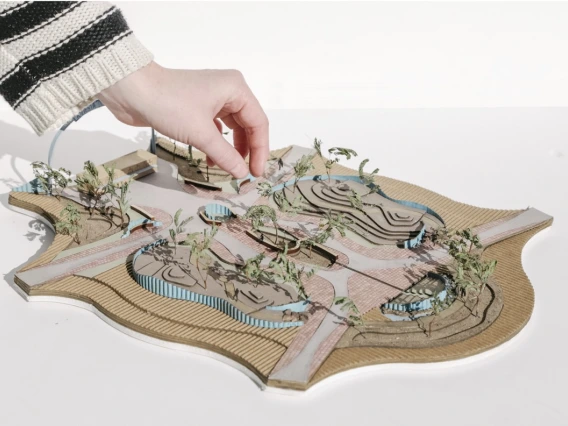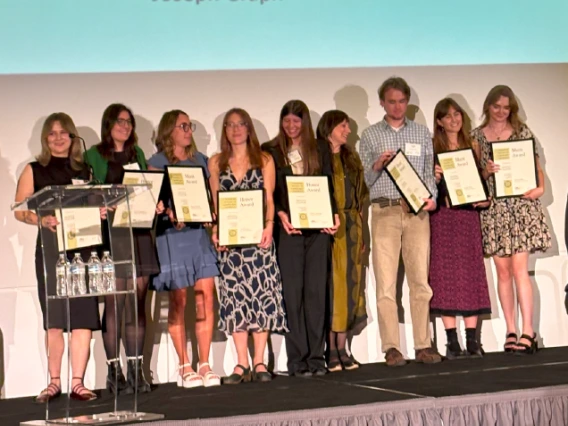ENR2 Case Study Published in Landscape Performance Series

CAPLA’s Kirk Dimond and Olivia Gilliam completed a case study on UArizona’s Environment and Natural Resources 2 Building (ENR2) that was published in the Landscape Architecture Foundation (LAF)’s award-winning Landscape Performance Series.
This online database includes over 190 exemplary landscape projects with quantified environmental, social and economic benefits.
Associate Professor of Landscape Architecture Kirk Dimond and MLA Candidate 2025 Olivia Gilliam worked with Allison Colwell of Colwell Shelor Landscape Architecture to better understand the environmental and social benefits of this uniquely integrated building and landscape.
Gilliam explains how working on this project enhanced her learning experience at CAPLA.
“I had the pleasure of getting my hands on some of ENR2's construction documents, planting plans, drainage plans, irrigation specifications, you name it,” says Gilliam. “Even simply getting access and experience with all the nitty-gritty that goes into the planning and construction of a building and its landscape was invaluable.”
It provided her with a glimpse into an area she never expected to explore.
“This experience definitely strayed from something I envisioned myself doing in the future,” says Gilliam. “With it being a more investigative and research-based project, it was a nice juxtaposition to the design-centric landscape architecture coursework.”
Dimond connected with Colwell through recent MLA graduate Krista Planinac, who had interned with Colwell’s firm.
“Allison was great to work with and I appreciated her knowledge and insight on the project along with her motivation, kindness and attentiveness in working with Olivia and I,” says Dimond. “I appreciated our interactions with her, especially for Olivia, as a current student, getting to see her personable example of leadership in the field.”
Dimond saw this as a chance to represent Arizona and its unique challenges to the greater landscape architecture community.
“At the moment there are not a lot of cases from Arizona included in the series, so it’s wonderful to contribute to further represent our region and share the insight we have in working with extreme heat among other landscape challenges,” says Dimond.
Completed in 2015, ENR2 is part of UArizona's commitment to environmental sustainability and interdisciplinary research and studies that focus on earth science, environmental programs and natural resources.
Dimond appreciates the blend between architecture and landscape architecture seen in ENR2.
“I hope this can inspire more close collaborations between various disciplines to further innovate with high performance in our built environment,” says Dimond.
The building contains offices, classrooms, auditoriums and gathering rooms, as well as a café and central courtyard.
The impact of ENR2 was assessed and documented through LAF’s innovative Case Study Investigation program, a unique research collaboration among faculty researchers, designers and students.
They found that ENR2 provides a satisfying outdoor experience according to 85% of 76 surveyed users, with 95% of regular users reporting that ENR2 and its landscape have a positive impact on their health and well-being.
The building was also shown to provide aesthetic value, with 94% of 75 surveyed users rating ENR2’s aesthetic value higher than other buildings on campus.
A variety of other benefits of the design of ENR2 are highlighted in the full report.



